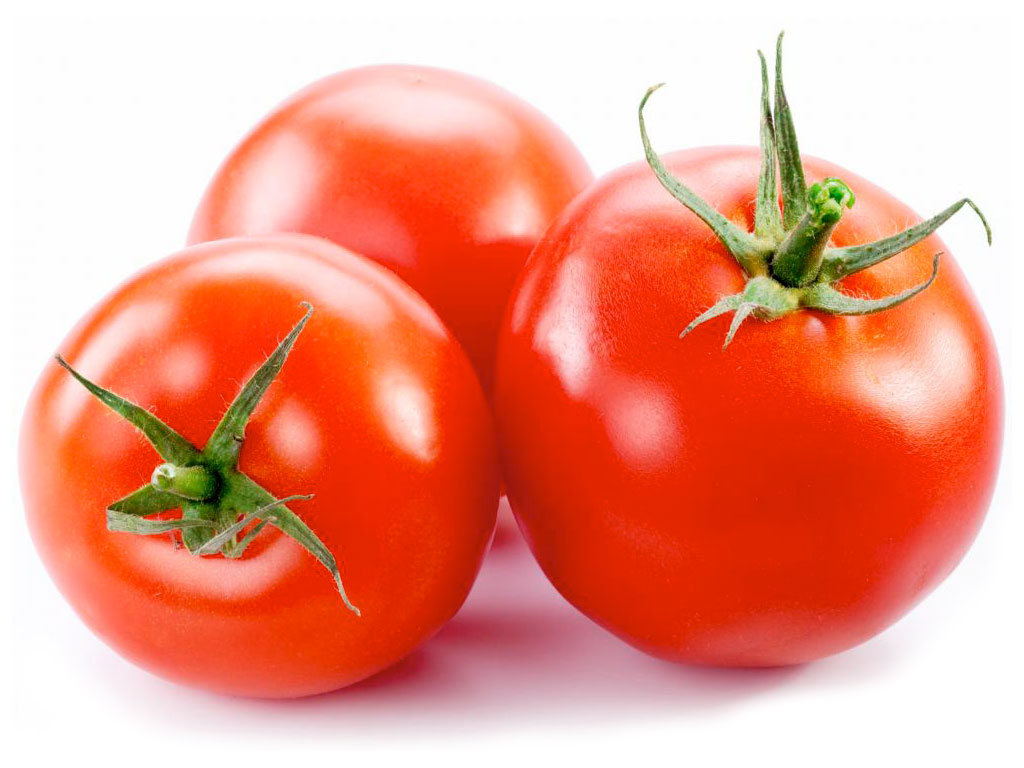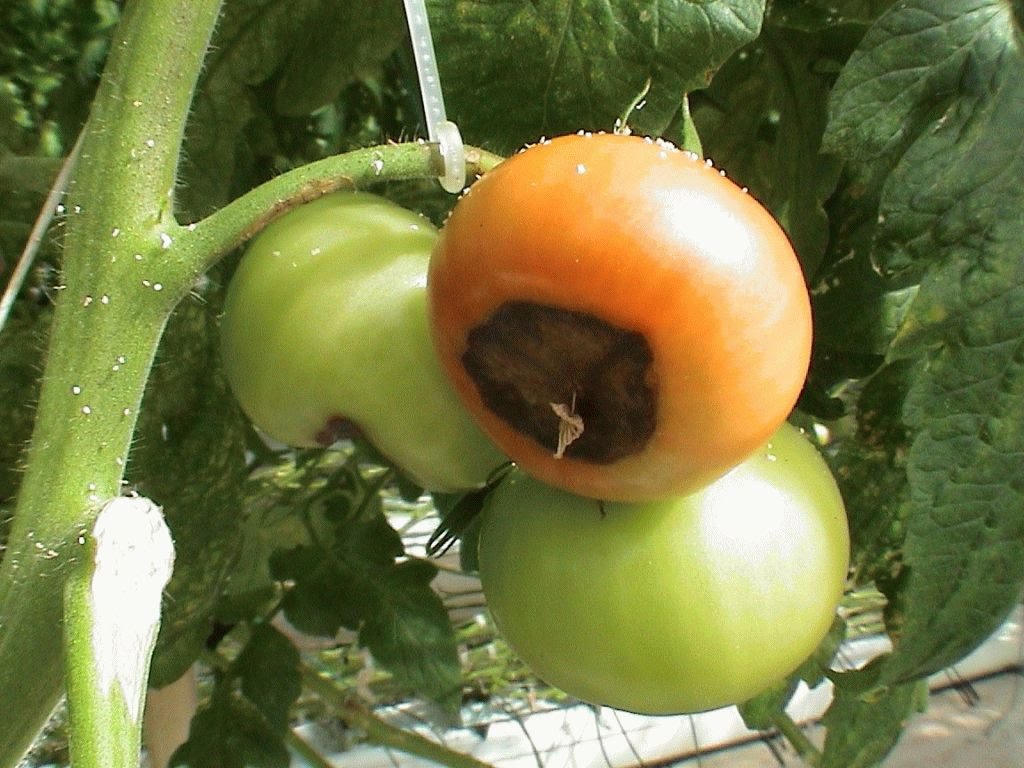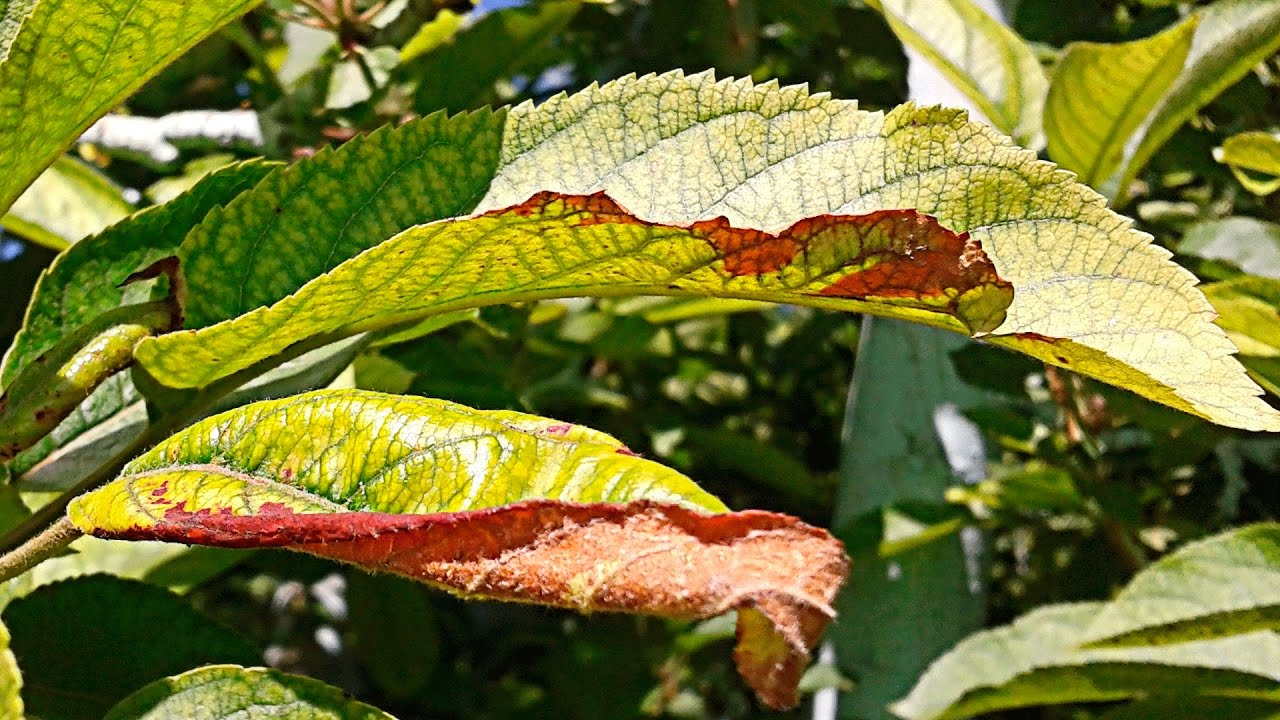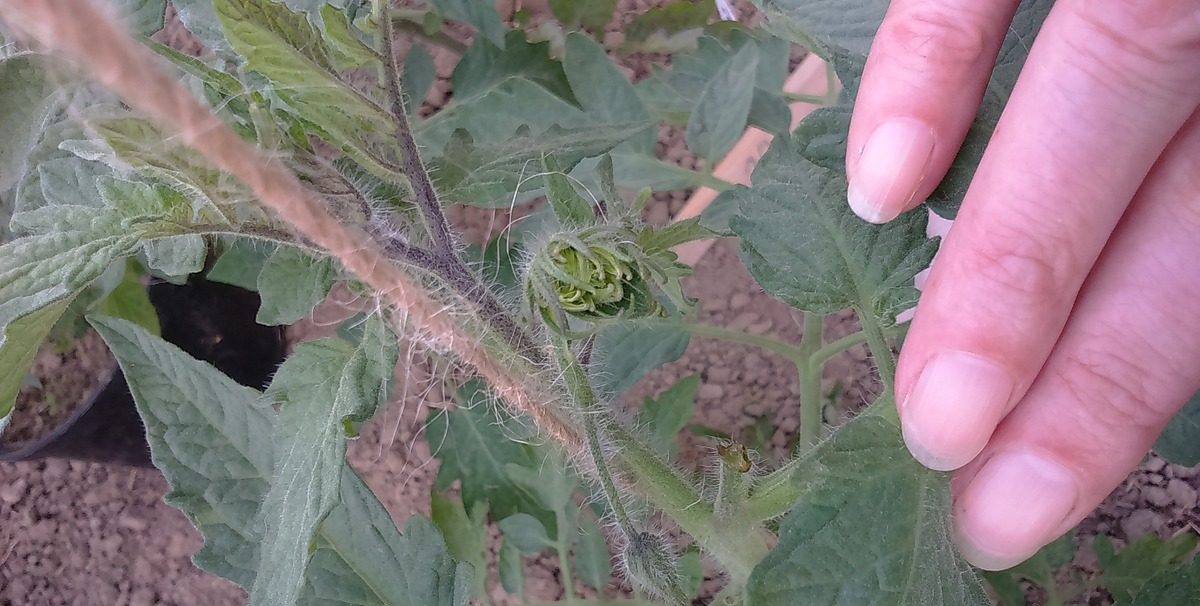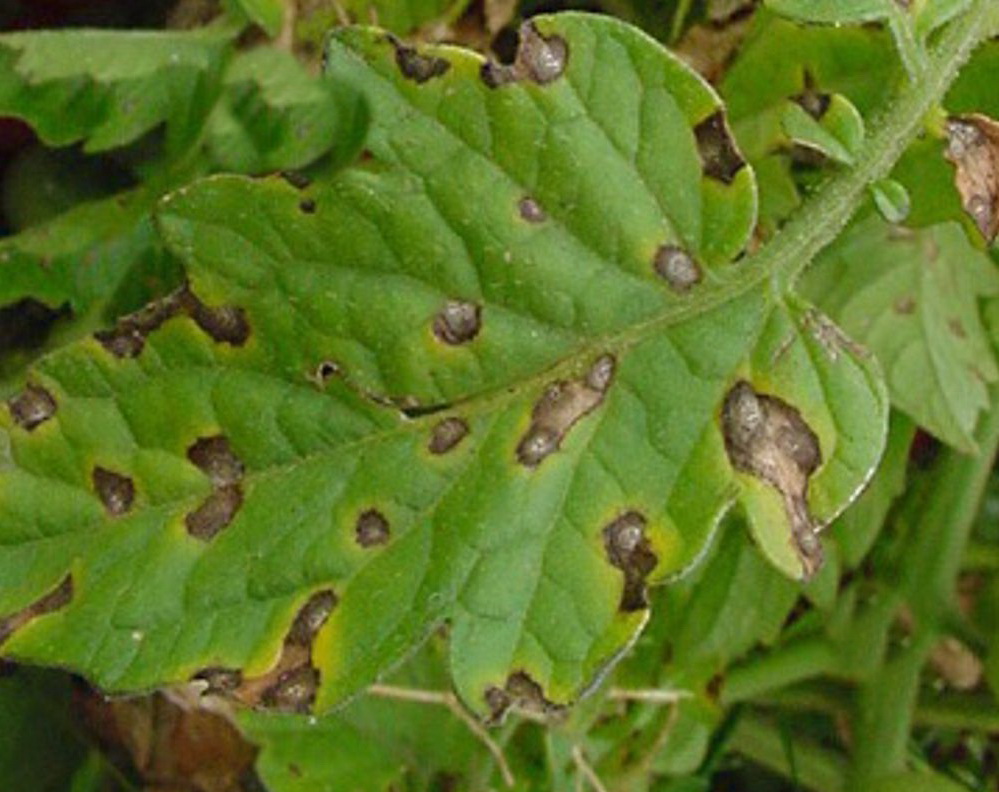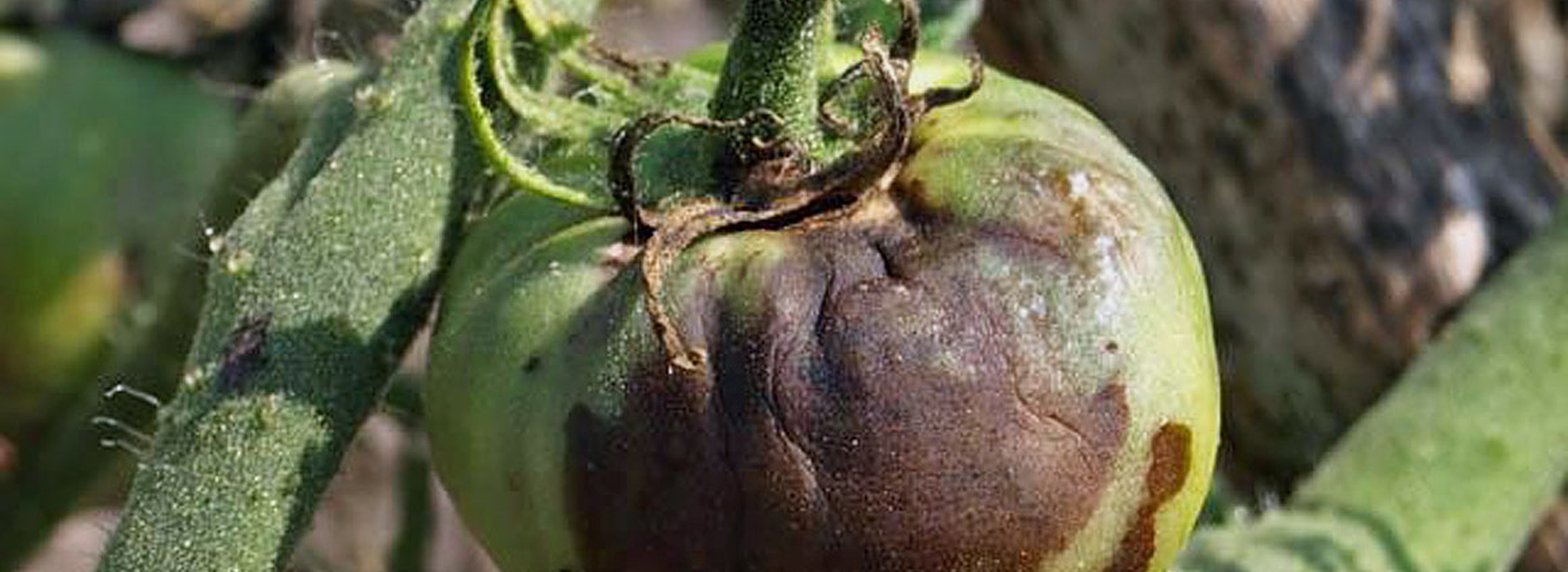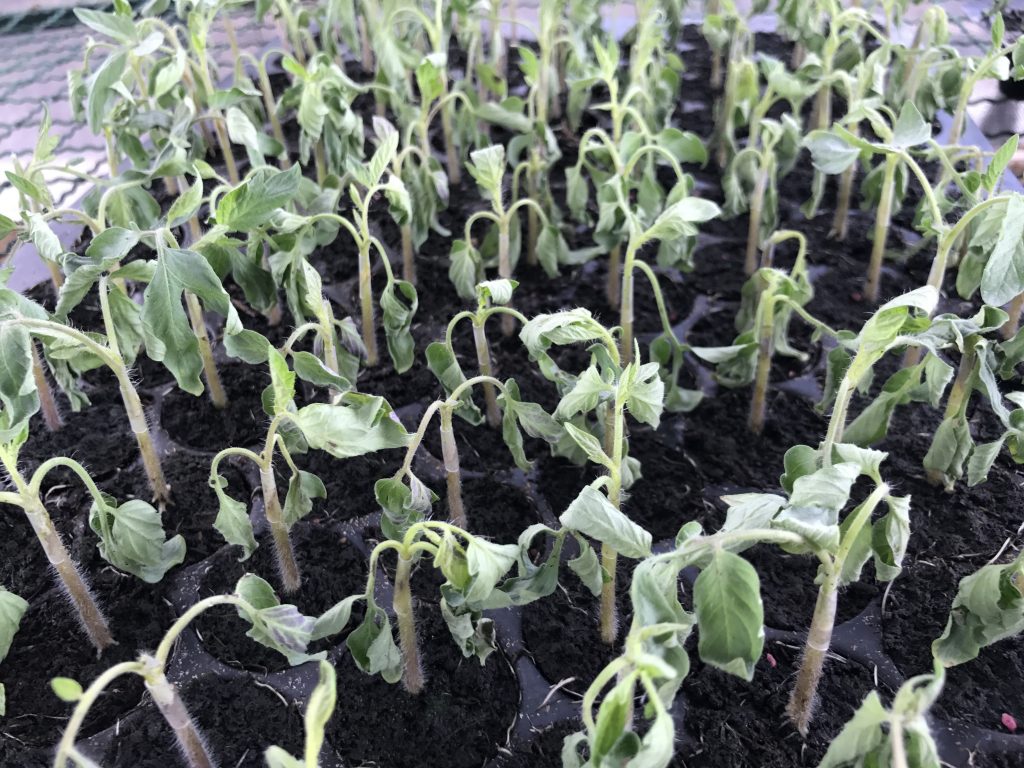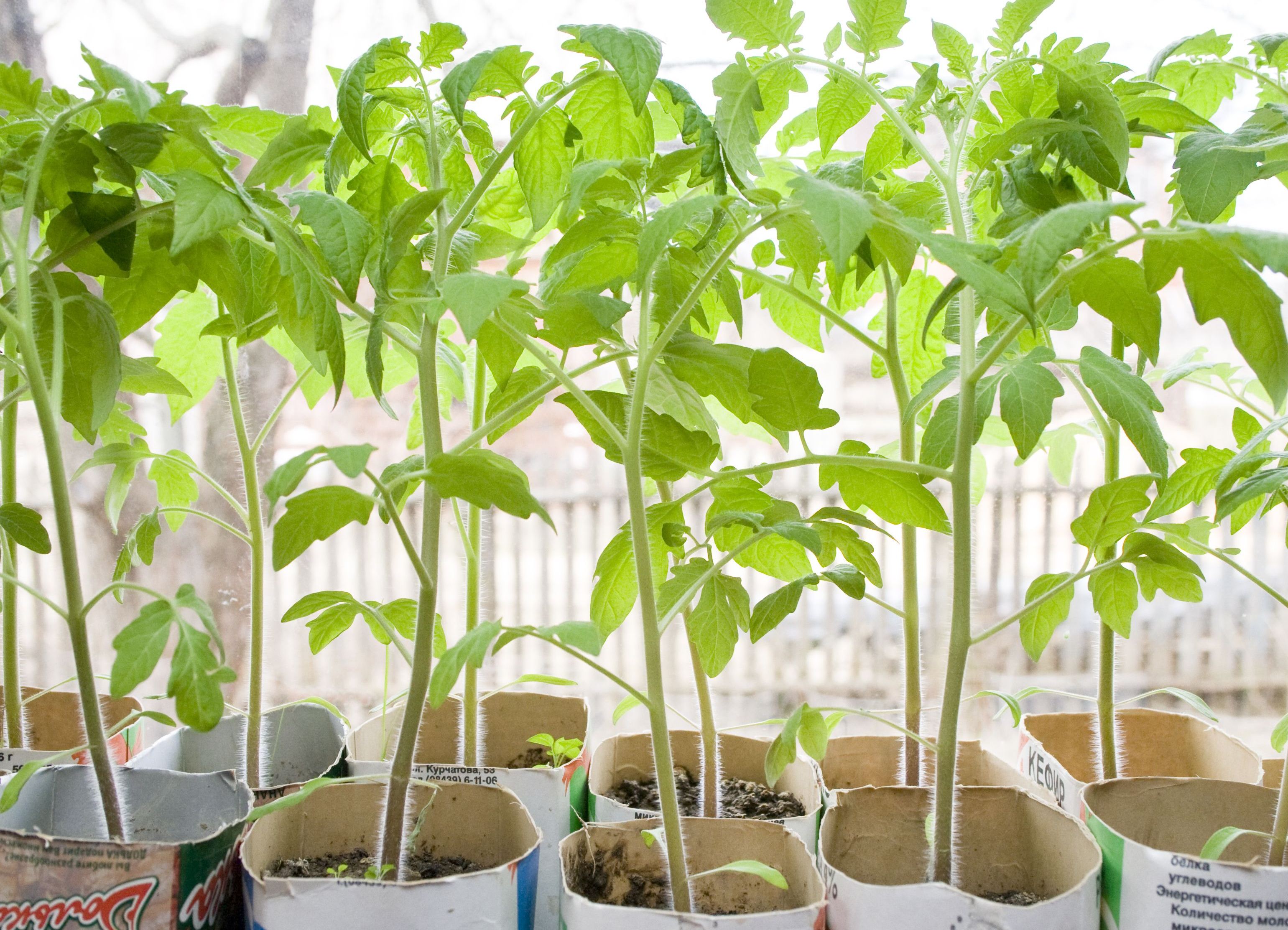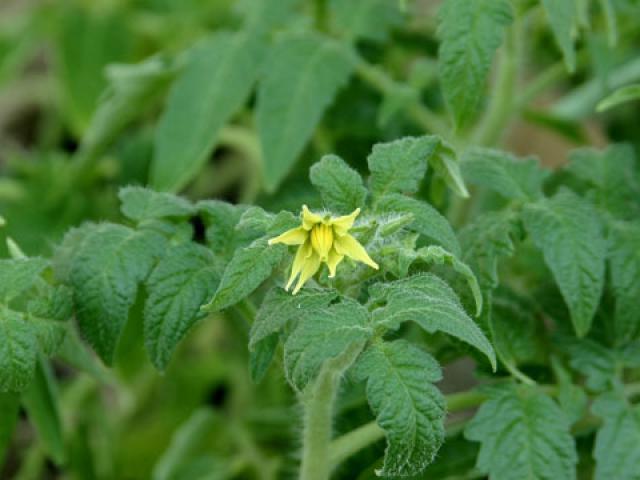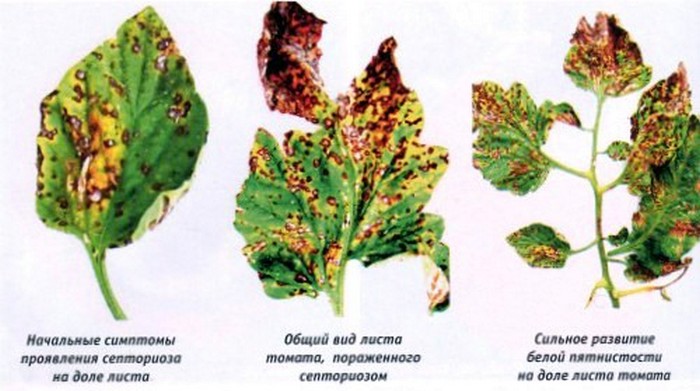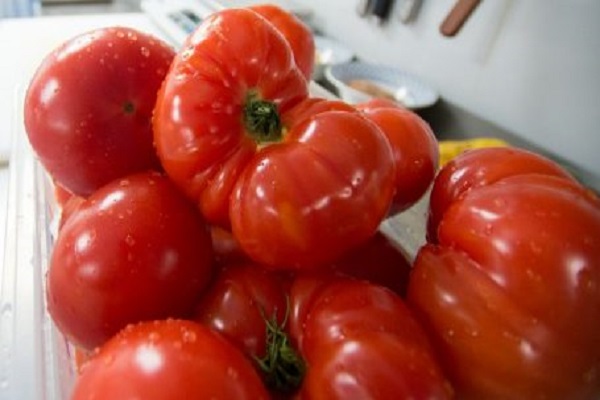Content:
To grow a high-quality tomato crop, you need to carefully study not only the features of care, planting, but also tomato diseases, which can cause significant harm to all plantings.
Basic information about tomatoes
Tomatoes (or tomatoes) are:
- an annual or perennial plant;
- herbaceous from the genus Nightshade, the Solanaceae family;
- vegetable crop.
The tomato fruit, if viewed from the side of botany, is considered a multi-nested syncarpous berry, however, according to the method of application, it belongs to the vegetable. The name "tomato" translates as "golden apple", and the word itself is a descendant of the Aztec name of the plant tomatl. In Russian, the names "tomato" and "tomato" are recognized as equal.
Culture has:
- Strong and well-developed tap root system. The roots grow quickly and go deep into the ground to a depth of 1 meter, spread in diameter by 1.5-2.5 m.
- Erect, lodging and branching stem, reaching a height of 2 m, depending on the variety.
- Unpaired, dissected leaves with large lobes resembling potato foliage.
- Small flowers, not too attractive, collected in yellow tassels.
- Fruits in the form of juicy multi-nest berries, which are characterized by a variety of shapes, sizes, weight and colors.
The bush can be non-standard, standard, potato.
It is worth noting that tomatoes are optional self-pollinators. On one plant there can be flowers for both male and female, and sometimes hermaphrodite ones are formed.
The color of the fruit is:
- pale pink;
- bright red;
- raspberry;
- white;
- light green;
- light yellow;
- golden yellow.
If there is too much nutrition and high humidity, roots can form on various parts of the stem, which allows reproduction by seeds, cuttings, and even lateral shoots.
Diseases of tomatoes
Diseases of tomatoes and their treatment are one of the main difficulties, since the former are difficult to detect, and the latter is not so easy to carry out.
Quite often, you can see that tomatoes have yellow spots on the leaves or rot has appeared. What to do if the tomato fruit is infected by a bacterial virus? Are there folk ways to process the fruits so that they are beautiful, juicy and tasty, like strawberries in the juice itself? The answers to all these questions in the form of a description of various diseases are presented below.
Gray rot
This tomato disease is caused by the rapidly growing fungus Botrytis cinerea Pers. It infects tomato fruits both in the greenhouse and in the open field. The disease spreads in conditions of high humidity, with an unbalanced diet, due to an excess of nitrogen fertilizers.
It appears on tomatoes as:
- rot on gray fruits;
- fluffy plaque;
- leaf spots;
- lesions on the stems.
The disease can be transmitted between plants and when infected, they will quickly die. If the first rotten tomato fruits are found, they must be collected and destroyed (burned).
Fusarium
With this disease, the foliage begins to acquire a light yellow tint and curl. Fusarium causes a rapid weakening of the tomato bush, which makes it drooped due to rotting roots.
To prevent the occurrence, you need to decontaminate the soil before planting. If the plant is sick, then Fitosporin or Fundazol is used for treatment.
Chlorosis
Why do tomatoes wither? This may be due to a banal iron deficiency (or in another way it is called tomato chlorosis). The culture is especially demanding for this component, and if the amount of substance added is insufficient, then certain actions must be taken.
Growing several varieties of tomatoes at once, the gardener may notice that some remain healthy, while others deteriorate. The reason for this phenomenon is the excessive use of potassium permanganate in the disinfection of seeds, especially against the background of a lack of other nutrients.
To eliminate the problem, the seedlings are sprayed with a 0.1% iron chelate solution. You can use a 0.1% solution of vitriol for spraying, but the result will have to wait a little longer.
Terry
It is not at all necessary to remove double flowers, since they do not carry much harm, however, they will cause the formation of "monster fruits": larger, ribbed and irregular in shape.
Some gardeners prefer to grow uniform fruits so that they all look like a selection, and for this, dubious double buds are removed at the stage when they are forming. This problem is not a tomato disease, but can arise due to a sharp temperature drop, which is extremely rare and also not common.
Mosaic
Fungicides for tomatoes are selected only with the correct definition of the disease and one of the most famous is the mosaic, which is the least dangerous of all.
It is capable of destroying about 15% of the crop. For its occurrence, high humidity and warm weather are needed.
The disease is formed due to the action of a virus, from the effects of which the foliage begins to dazzle in light gray or dark green tones. Yellow spots may appear on the fruit. If you run the problem, the foliage will curl.
To fight, the tomatoes are dug up and removed from the plot along with a clod of earth. The place where the disease was detected must be treated with potassium permanganate.
Brown spot of tomatoes
What spots on tomato leaves can be found in the garden? The culture may have such a problem as leaf mold - a fungal disease. Some call it brown spot.
Withering and dry foliage can be prevented - for this, at an early stage, an infusion is carried out on the basis of garlic cloves, previously carefully crushed and introduced in a ratio of 40 g per 10 liters of water. Processing is carried out once a month from the moment when the first ovary begins to form.
Some gardeners use infusions of celandine, water with potassium permanganate and fungicides.
Alternaria
Why do tomatoes turn black? Tomato alternaria, or macrosporiosis, brown and dry spotting is a disease that is considered particularly harmful and common. It can infect a wide variety of aerial plants, and completely spoils the entire bush from bottom to top.
Most often, Alternaria can be found precisely on greenhouse tomatoes in the form of white spots on the foliage. Fungicides are used for treatment, and treatment should be carried out when the first symptom appears.
Late blight
Among the many diseases spread throughout the world, late blight was recognized as the most common in 1845. It was first discovered on potato tops, and just a couple of years later, it began to affect the foliage of tomatoes. This problem, immediately after its appearance, can affect almost the entire crop.
The disease is fungal and begins to develop actively during periods when the air temperature at night is significantly lower than daytime, and there is also high humidity, fog and dew often fall. Naturally, it is dangerous for those tomatoes that grow outside the greenhouse and greenhouse.
If the case is too advanced, the use of contact or systemic fungicides is required, which can bring results in the shortest possible time without harm to the crop and not infected plants. If the culture is severely damaged, it is removed from the site and burned to prevent the spread of infection.
Other diseases
Tomatoes have other diseases and the fight against them also requires certain skills. The most important and effective measure is to detect the disease as early as possible.
Less often than others, gardeners meet:
- powdery mildew on tomatoes;
- root rot of tomatoes, the treatment of which is very difficult;
- necrosis.
Tomato pests
Diseases of a tomato, of course, are dangerous to the culture, since it is very difficult to treat them, and sometimes you have to fight for weeks, but pests can also cause considerable harm.
The main pests of tomatoes:
- Whitefly. The pest has a pair of white wings and can provoke yellow spots on the foliage, which will gradually begin to fade. This insect leaves secretions on the plant, and from them the reproduction of the sooty fungus begins. As a result, the plant may turn black, completely die. For the fight, special preparations are used for processing.
- Slug. It damages fruits and foliage. To prevent harm, a composition of wood ash, tobacco dust and lime is scattered around the bush, and slaked lime is used for spraying. They fight the pest by loosening it immediately after watering and sprinkling it with ground hot pepper powder.
- Spider mite. The insect is very small and resembles a light, even almost transparent point. The insect encloses foliage in a spider web, gradually sucking out the juice. To combat, insecticides and acarides are used, as well as an infusion based on garlic or dandelion foliage, to which soap is added.
- The bear is a large brown insect, reaching a length of 5 cm. It has powerful forelegs and a short elytral part. The bear gnaws at the roots of a young plant, this provokes its death. To fight, they use an infusion of hot pepper, vinegar, or they fight with the highly effective insecticide Diazinon.
- The wireworm is a pest in the form of a clicker beetle larva that damages the tomato root by penetrating the stem. The way to fight is very simple. A couple of days before planting seedlings, a special agent is laid in the soil in the form of a bait. Namely, on a stick no more than 20 cm long, you need to string carrots, beets or potatoes. Before planting, this bait is treated with an effective insecticide, after which the treated soil is necessarily limed.
- Gnawing scoop. It may appear due to moths, since this is their caterpillar in dark gray or black, reaching 4 cm in length. These pests gnaw through the foliage and tomato petioles. To eliminate them, you need to thoroughly weed the garden bed, dig the soil as deep as possible in the fall, and in the summer, manually collect and destroy the caterpillars. Insecticides are used for treatment.
There is a certain classification of insects according to which part of the plant they infect:
- The lower parts of the stems, as well as the neck at the root, and the root of a young plant are spoiled by a wireworm, a bear, a caterpillar of a gnawing scoop, as well as a larva of a lamellar beetle.
- Roots are attacked by rootworm nematodes, both in the polycarbonate greenhouse and in the open field.
- The foliage is eaten by slugs, snails, locusts, meadow moth, gamma scoop, garden scoop, potato flea, Colorado potato beetle.
- Insects in the form of aphids, greenhouse whiteflies, thrips, ticks, potato moths will not pass by the tomato either.
- Fruits can be affected by cotton bollworm, caradrin scoop, leaf miner.
With a competent individual approach to removing pests and treating diseases, you can achieve a positive result in the shortest possible time and without negative consequences for the plant.
